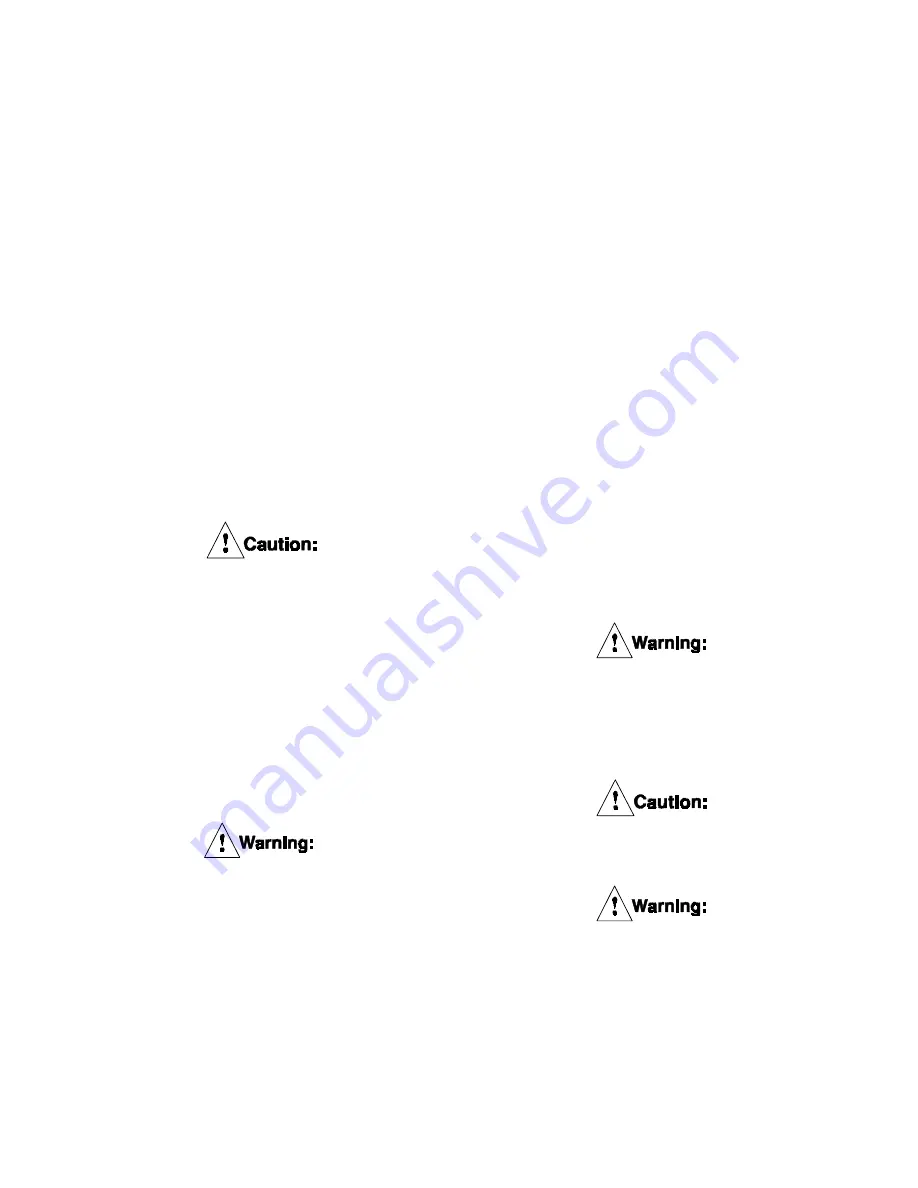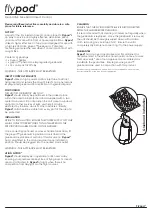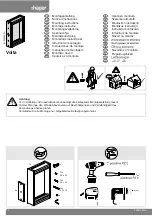
4.1.3.9
For multi-disc units, repeat steps 4.1.3.7 and
4.1.3.8 for each additional friction disc and
reaction plate * * .
4.1.3.10
Slide the pressure plate and the cylinder/piston
assembly onto the studs. Lubricate the threads
on the end of the studs w ith 30 w t. oil or anti-
seizing compound and install the w ashers
(17),w ear spacers (29) and the locknuts (18)
removed in 4.1.3.6.
4.1.3.11
The w ear spacers are " stored" under the
locknuts and w ashers for use after replacing
the friction discs. See Figure 12.
4.1.3.12
Discard un-used w ear rings. New w ear rings
are included in friction disc replacement kits.
4.1.4
While supporting the w eight of the
cylinder/piston assembly, tighten the locknuts,
ONE TURN AT A TIME and in an alternating
(crossw ise) pattern until the cylinder is seated
firmly against the clamp tubes. Torque the
locknuts to the appropriate value. See Table 4.
The locknuts (18) must be tightened
gradually to prevent damage to the
tensioner components.
4.1.5
Check that clearance exists betw een friction
discs and w ear plates.
4.1.6
Reinstall air and coolant lines per 2.0.
4.2
Wear Adjustments (WCB’s
without stop tubes)
4.2.1
Measuring Lining Wear
Periodically examine the tensioner for
wear of linings and wear plates. Failure
to perform this examination will result in
excessive wear, a significant reduction in
torque, and may result in personal injury
and/or damage to the machinery.
4.2.1
Wear limits for the WCB components
are show n in Section 7.0. If any w ear
limit has been reached or exceeded, that
component must be repaired or replaced.
Note: Item numbers (#) are show n on
Figure 1.
4.2.2
Single Disc Units
Apply approximately 25 PSIG (1.7 bar) air
pressure to the cylinder to engage the
tensioner. Measure the gap " X" betw een the
cylinder (19) and the pressure plate (13) or the
gap " Y" betw een the pressure plate (13) and
the mounting flange (2) as show n in Figure
13. If the gap exceeds the limits show n in Ta-
ble 9, the friction discs and/or w ear plates
must be inspected to ensure that the w ear
limits listed in section 9.0, Table 10 have not
been exceeded.
4.2.3
Multi-disc Units
Apply approximately 25 PSIG (1.7 bar) air
pressure to the cylinder to engage the
tensioner. Measure the gap " X" betw een the
cylinder (19) and the pressure plate (13) or the
gap " Y" or " Z" betw een the pressure plate
(13) and the reaction plates (31) and the gap
" Y" betw een the reaction plate (31) and the
mounting flange (2) as show n in Figure 14, 15
and 16. If the gap exceeds the limits show n in
Table 10, the friction discs and/or w ear plates
must be inspected to ensure that the w ear
limits listed in section 7.0.
If wear adjustment is not made, the
piston may pop out of the cylinder result-
ing in loss of torque and/or seal damage.
4.2.4
Wear Adjustment
Premature wear adjustment may result
in improper disc clearances.
If a wear adjustment is not made, the
piston may be allowed to travel past the
end of the cylinder resulting in a sudden
loss of air pressure and a complete loss
in torque.
4.2.5
Disconnect air and w ater supply lines
from the tensioner.
PDF FORMAT
18
© Copyright Eaton Corp., 1995. All rights reserved.
Summary of Contents for 146246A
Page 5: ...18 24 36 WCB Single Disc Figure 4 PDF FORMAT 4 Copyright Eaton Corp 1995 All rights reserved ...
Page 6: ...18 24 36 WCB Dual Disc Figure 5 PDF FORMAT 5 Copyright Eaton Corp 1995 All rights reserved ...
Page 7: ...18 24 36 WCB Triple Disc Figure 6 PDF FORMAT 6 Copyright Eaton Corp 1995 All rights reserved ...
Page 8: ...Figure 7 18 24 36 WCB Quad Disc PDF FORMAT 7 Copyright Eaton Corp 1995 All rights reserved ...
















































